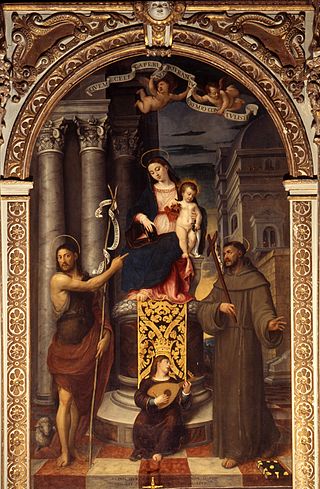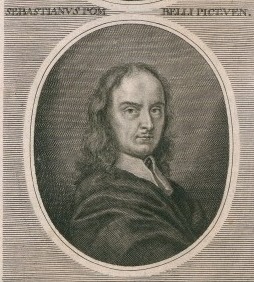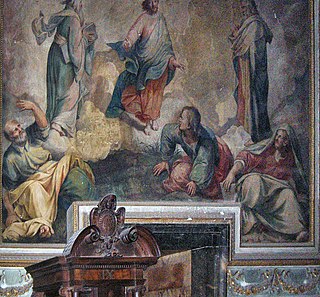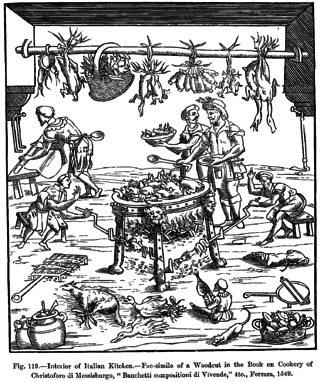Related Research Articles

Alessandro Vittoria was an Italian Mannerist sculptor of the Venetian school, "one of the main representatives of the Venetian classical style" and rivalling Giambologna as the foremost sculptors of the late 16th century in Italy, producing works such as Annunciation.
Giovanni Balducci, called Il Cosci after his maternal uncle, was an Italian mannerist painter.

Francesco Beccaruzzi was an Italian painter of the Renaissance era, active near his hometown of Conegliano and in the neighborhood of Treviso. He was influenced by both Il Pordenone and later Titian. He painted Saint Francis receiving stigmata (1545) from Conegliano, but now in the Gallerie dell'Accademia in Venice.

Sebastiano Bombelli was an Italian painter, mainly active in Venice, during the Baroque period.

Antonio Bellucci was an Italian soldier who became a painter of the Rococo period and was best known for his work in England, Germany, and Austria. He was one of the many Venetian-trained artists of his time, including Ricci, Tiepolo, Amigoni, and others, who sought commissions north of Italy, providing patrons with the then-popular Italianate grand-manner frescoes for private palaces.

Alessandro Araldi was an Italian painter of the Renaissance, active mainly in Parma.

Cesare Aretusi was an Italian painter of the late-Renaissance period.

Durante Alberti was an Italian painter of the late-Renaissance period.
Giuseppe Benoni (1618–1684) was an Italian architect, active during the Baroque period, mainly in Venice.

Filippo Abbiati (1640–1715) was an Italian painter of the early-Baroque period, active in Lombardy and Turin, together with Andrea Lanzani and Stefano Maria Legnani, he was a prominent mannerist painters from the School of Lombardy. Born in Milan, he was a pupil of the painter Antonio Busca. Alessandro Magnasco was one of his pupils along with Pietro Maggi and Giuseppe Rivola. Ticozzi claims he trained, along with Federigo Bianchi, with Carlo Francesco Nuvolone. Along with Bianchi, he painted the cupola of Sant'Alessandro Martire in Milan. Abbiati also painted a St. John preaching in the Wilderness for a church in Saronno.
Alessandro Badiale (1626–1671) was an Italian painter and engraver of the Baroque period, active in Bologna. He was a pupil of Flaminio Torre. Among his etchings are prints of Virgin seated with the Infant Jesus, between St. Philip Neri and St. Anthony of Padua, a Deposition and a Holy Family after Flaminio Torre. He also made a Madonna with Child, who holds a cross and an apple after Cignani.
Pietro Baratta (1659–1729) was an Italian sculptor of the Baroque period, active in Venice.

Alessandro Bardelli (1583–1633) was an Italian painter of the Baroque period.
Giuseppe Baroni was an Italian engraver of the 18th century. Together with Domenico Rosetti and Andrea Zucchi, he completed the prints for Il gran Teatro delle pitture e prospettive di Venezia, published in Venice in 1720 by Domenico Loviso in the Rialto. In this collection, the Madonna and child print by Nicolas Poussin and the Polyphemus by Pompeo Battoni are attributed to Baroni.

Pietro Bellotti (1625–1700) was an Italian painter active in the Baroque period.

Simone Brentana was an Italian painter of the Baroque period, active in Verona. He was born in Venice to Domenico Brentana, but became orphaned by age nine. After a prolonged desultory education in various fields including music, he trained as a painter in Venice with Pietro Negri, frequenting the Accademia di Belle Arti, moving in 1685 to Verona, where most of his paintings are located.
Fabio Berardi (1728–1788) was an Italian engraver of the Baroque period, active in Tuscany. He was born in Siena. He went to Venice when young, and trained under Joseph Wagner. Among other works, he engraved in 1767 a booklet of pictures about the life of emperor Francis I. He also engraved the following:
Stefano Ticozzi (1762-1836) was an Italian art historian.

Cristoforo di Messisbugo or Cristoforo da Messisbugo was a steward of the House of Este in Ferrara and an Italian cook of the Renaissance.
Antonio Foler (1536-1616) was an Italian painter active mainly in Venice, painting sacred subjects in a late-Renaissance or Mannerist style. Follero, Egie
References
- Ticozzi, Stefano (1830). Dizionario degli architetti, scultori, pittori, intagliatori in rame ed in pietra, coniatori di medaglie, musaicisti, niellatori, intarsiatori d’ogni etá e d’ogni nazione' (Volume 1). Milan: Gaetano Schiepatti. p. 52.
- Getty ULAN entry.